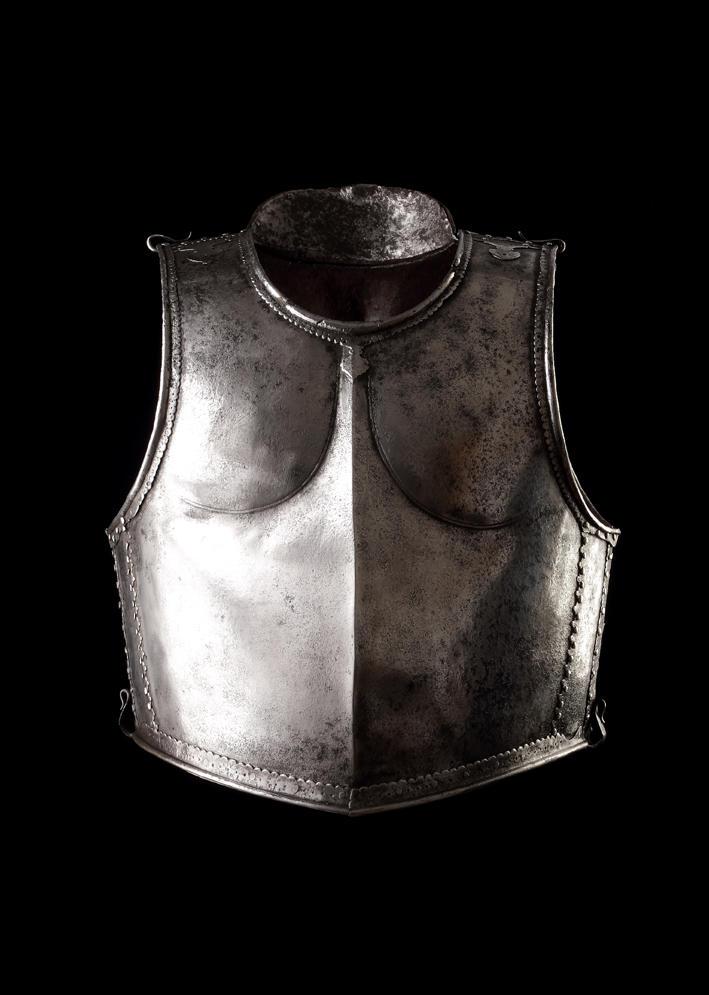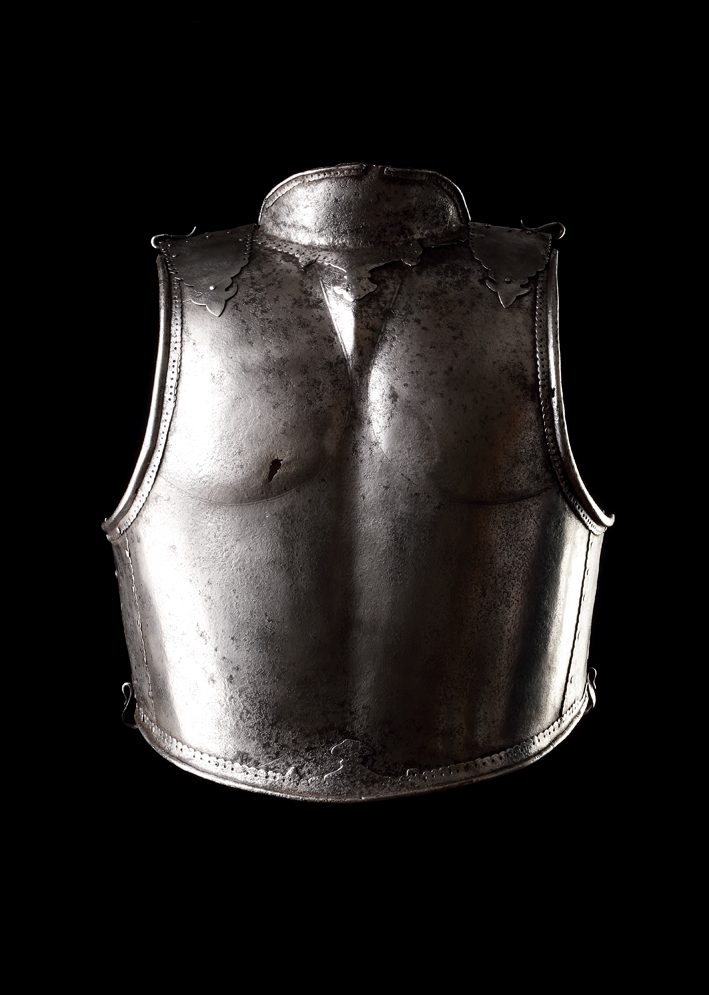Cuirass
Hyderabad, India
17th-18th Century
A steel cuirass from the armoury of the Nizam of Hyderabad, India, in the European style. The armoury contained a number of these armours, but this one is unusual in its wide proportions, it was clearly ‘tailored’ for a well-fed man.
Many of the group were inscribed with a date and the name ‘Sarkar Mir Nizam ‘Ali Khan Bahadur’ (1734-1803), who was given the title Nizam by the Mughal emperor Muhammad Shah and subsequently ruled in Hyderabad in the Deccan under the name of Asaf Jah II (1762-1803). Alexander (1) suggests that these inscribed armours were for a specially commissioned series, perhaps for a corps of bodyguards. The fact the one shown here has no inscription could mean it was specially commissioned, or left the armoury before the inventory.
The cuirass is composed of a breast and backplate attached at the shoulder and sides with iron hinges (some later replacements), held with decorative iron pins. The breastplate is shaped as a stylised ‘muscled torso’, with double engraved lines accentuating the pectorals and with a sharp median ridge bulging to allow sufficient room for the ample frame of the wearer.
The neck and arm openings have applied iron borders with a rolled outer edge and a serrated inner edge decorated with a row of punched dots. The border at the neck is extended at the center with a stylised palmette.
The back plate is shaped slightly over the shoulder blades which are also accentuated by double engraved lines, and has a shallow groove down the center (a small hole to the left shoulder blade). An upright rear iron collar with an applied border, the base extending into a stylised palmette, the bottom edge of the backplate has a matching palmette.
A similar example is in the Metropolitan museum. New York (acc. no.29.158.165a, b) (2), and in the Nasser D.Khalili Collection of Islamic Art (3).
(1) Alexander, Islamic Arms and Armour – In the Metropolitan Museum of Art, 2015, p.53.
(2) Alexander, Islamic Arms and Armour – In the Metropolitan Museum of Art, 2015, p.52-52, cat.no.15.
(3) Alexander, The Arts of War: The Nasser D.Khalili Collection of Islamic Art, 1992, p.175, cat.no.108.






